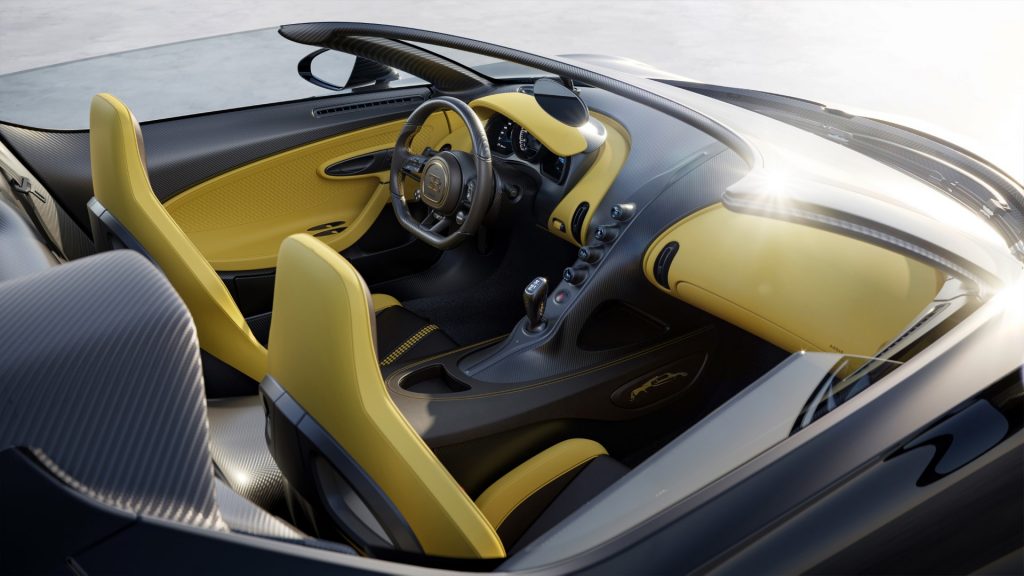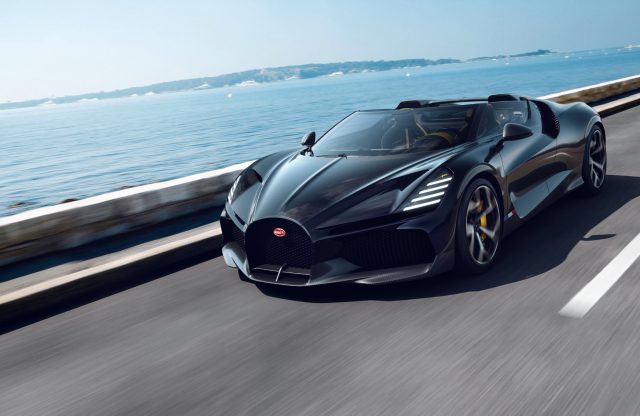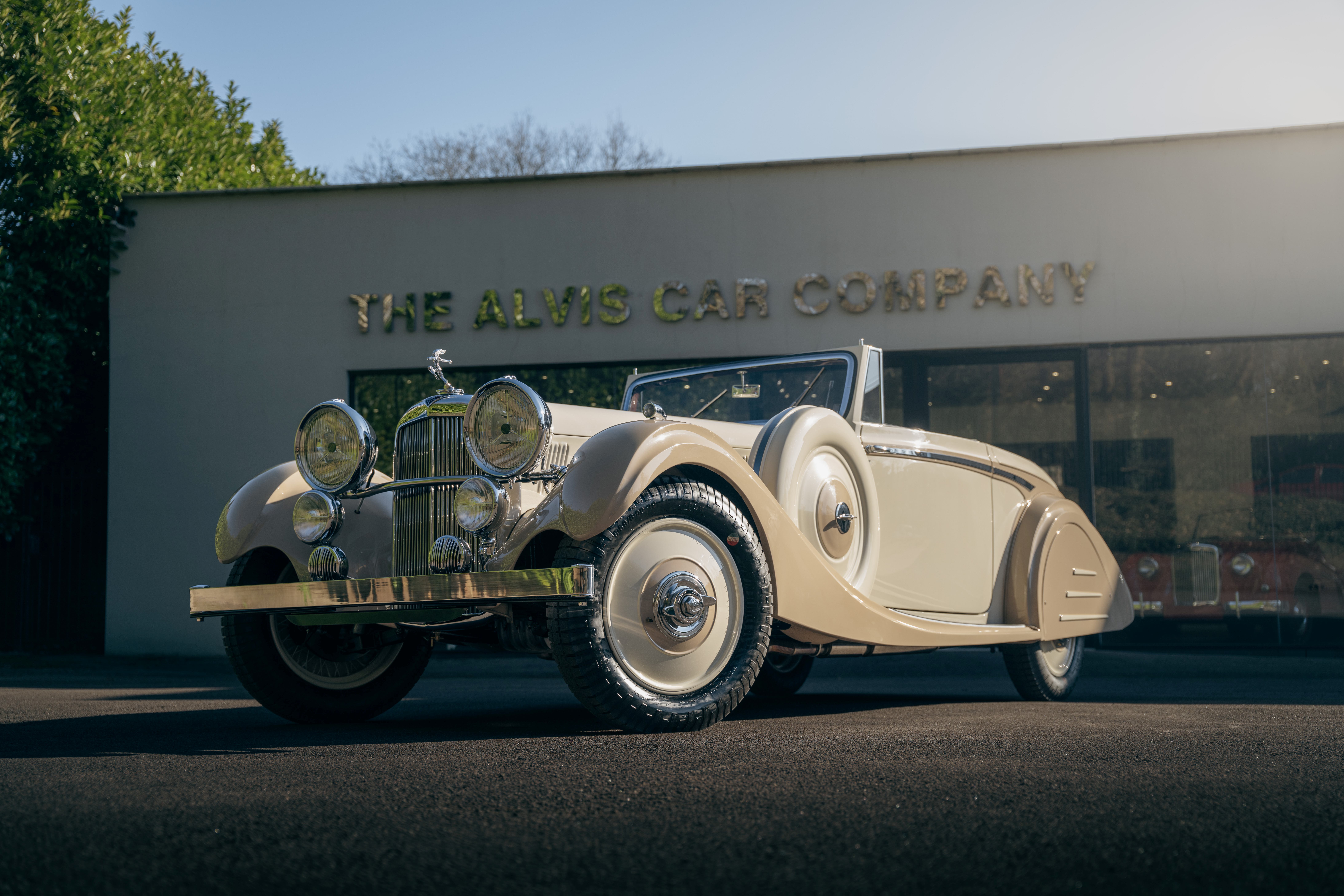WORDS: ELLIOTT HUGHES | PHOTOS: BUGATTI
Bugatti is marking the swansong of its legendary W16 engine with the release of the Mistral Roadster in anticipation of the company switching focus to electric powertrains following its merger with Rimac.
Based on the Chiron hypercar of 2016, the Mistral will be equipped with the ultimate 1578bhp “Thor” version of the W16 first seen in the engine bay of the Chiron Super Sport 300+, offering performance beyond any previous open-top production car.
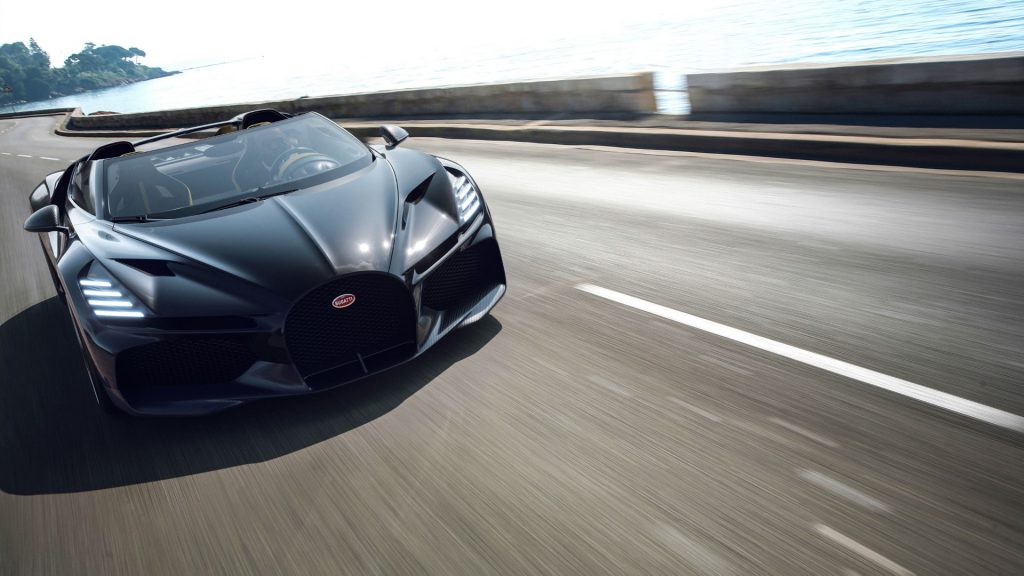
“For the final road going appearance of Bugatti’s legendary W16 engine, we knew we had to create a Roadster,” says Bugatti Rimac CEO Mate Rimac. “Well over 40 percent of all Bugatti vehicles ever created have been open-top in design, establishing a long lineage of vehicles that – to this day – are revered the world over. In the Chiron era there had, to-date, been no Roadster, so the introduction of the W16 Mistral continues this legacy.”
‘Mistral’ is a strong northwesterly wind that blows from southern France into the northern Mediterranean – an obvious reference to the car’s open-top design and incredible performance capabilities.
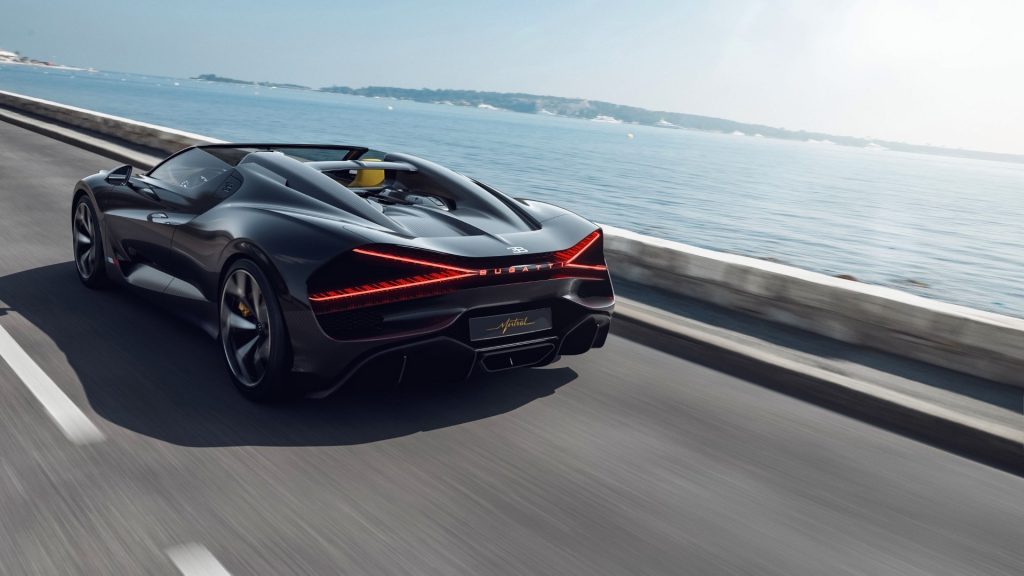
Bugatti will emphasise the Mistral’s potency by repeating the feat of its most recent Roadster, the Veyron 16.4 Grand Sport Vitesse, in attempting to clinch a new world speed record for an open-top road car. The Mistral stands in good stead to achieve such a feat, as its powertrain is identical to the unit that allowed the Chiron Super Sport 300+ to eclipse the historic 300mph mark back in 2019.
“The union of a Roadster format and our W16 powertrain is absolute perfection,” Mate Rimac asserts. “With the roof removed, and a pair of large air intakes directly behind your head feeding around 70,000 litres of air through the engine at full bore, driving the Mistral connects you to the intricate workings of this legendary powertrain like no other Bugatti to date.”
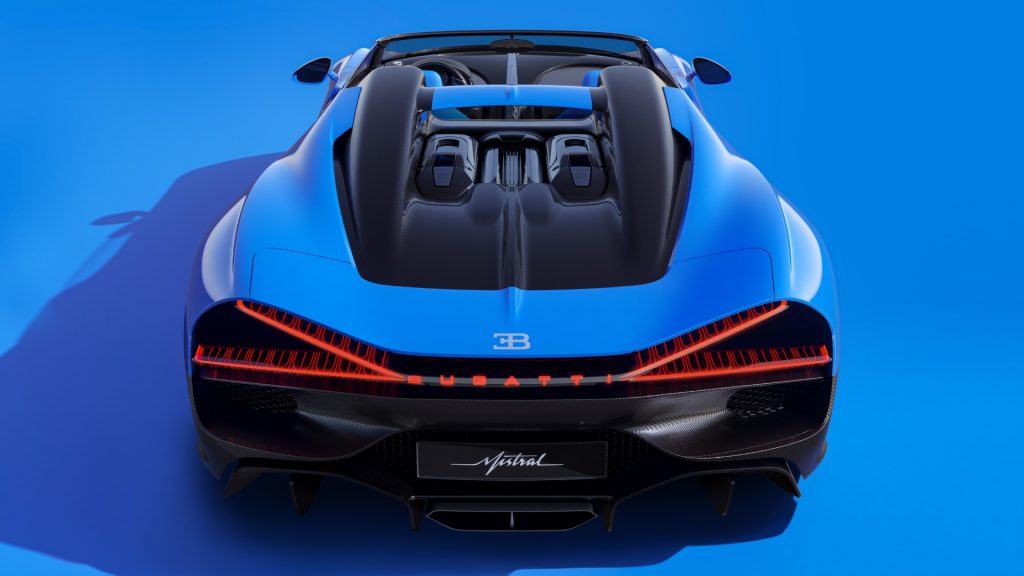
Mistral’s purposeful pair of air intakes is just one of the many areas where Bugatti has taken aesthetic inspiration from its enviable back catalogue. The Veyron 16.4 Grand Sport Vitesse featured a similar design and the way the intakes swoop down towards the rear from above the headrests are reminiscent of the 1934 Bugatti Type 57 Roadster Grand Raid displayed at the Louwman Museum in The Hague, along with its distinctive V-shaped windscreen.
Another nod to the pre-war era of Bugatti is the black and truffle brown colour combination that features subtle yellow accenting that adorns the Type 57 Grand Raid Roadster and was famously chosen by company founder Ettore Bugatti for many of his personal cars, including his open-top Type 41 Royale.
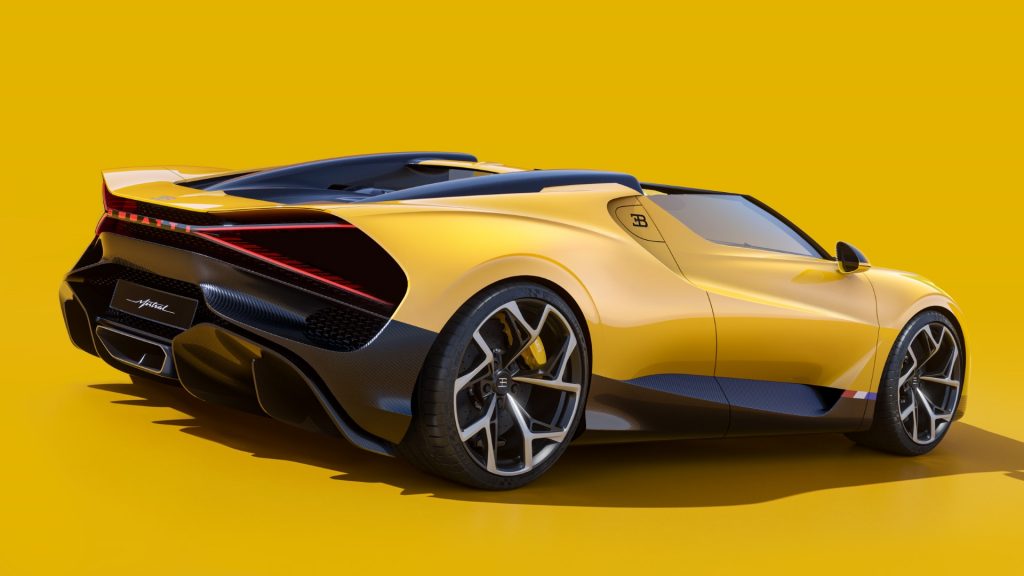
Other design traits that can be traced to other Bugatti models is the vertical layout of the headlights first seen in the limited-production Divo and La Voiture Noire hypercars, as well the Mistral’s deeper and wider horseshoe grille. The rear shares the X-shaped taillight with last year’s Bolide.
Bugatti deputy design director revealed that the intricate four-light signature of the headlights alludes to the Mistral’s four-wheel-drive system and quartet of turbochargers. In addition, the headlights also aid the car’s aerodynamics by ingesting oncoming air and diverting it through the front wheels to cut drag. In a similar vein, the rear lights function to vent air through ducts from the side oil coolers to the radiators.

Underpinning the car’s powertrain is a bespoke carbon fibre monocoque chassis that has allowed Bugatti to create a more elegant and rounded profile while still passing rollover tests and maintaining the car’s rigidity. The unique monocoque is the foundation of what Bugatti calls its “Form Follows Performance” design philosophy that is employed to create a car that is both beautiful to behold and awe-inspiringly powerful.
The themes of performance, beauty and heritage in the Mitral’s design continue in its interior. Following the lead of the Chiron, Bugatti set out to create an elegant and luxurious cockpit that also offers the functionality required for such a high performance vehicle.
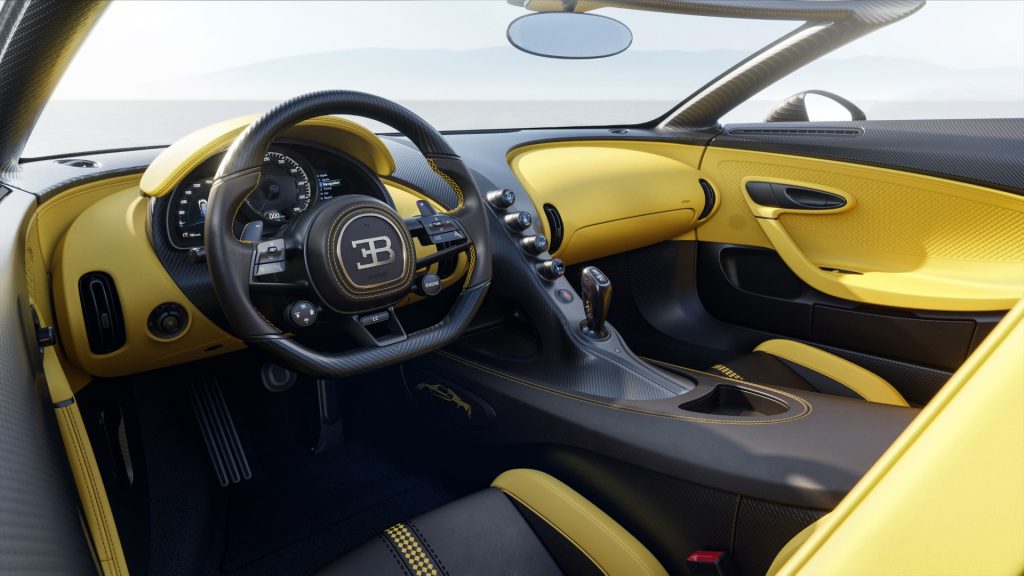
This is achieved with the use of high quality materials such as advanced lightweight titanium, milled aluminium and plush leather upholstery. A highlight of the interior is the gear shifter, which is milled from a solid block of aluminium and finished with wood and inset with an amber insert of Rembrant Bugatti’s famous ‘dancing elephant’ sculpture that adored the bonnet of the Type 41 Royale.
Bugatti will build just 99 examples of the Mistral, priced at £5m apiece. Deliveries will begin in 2024.
